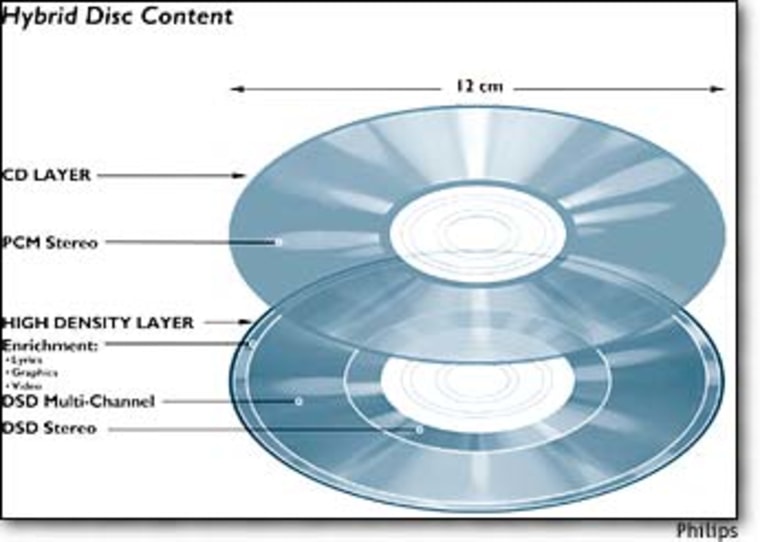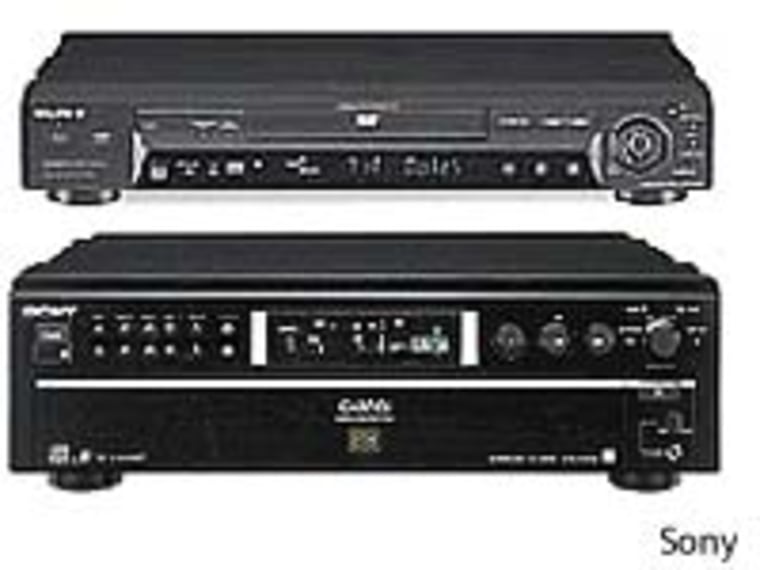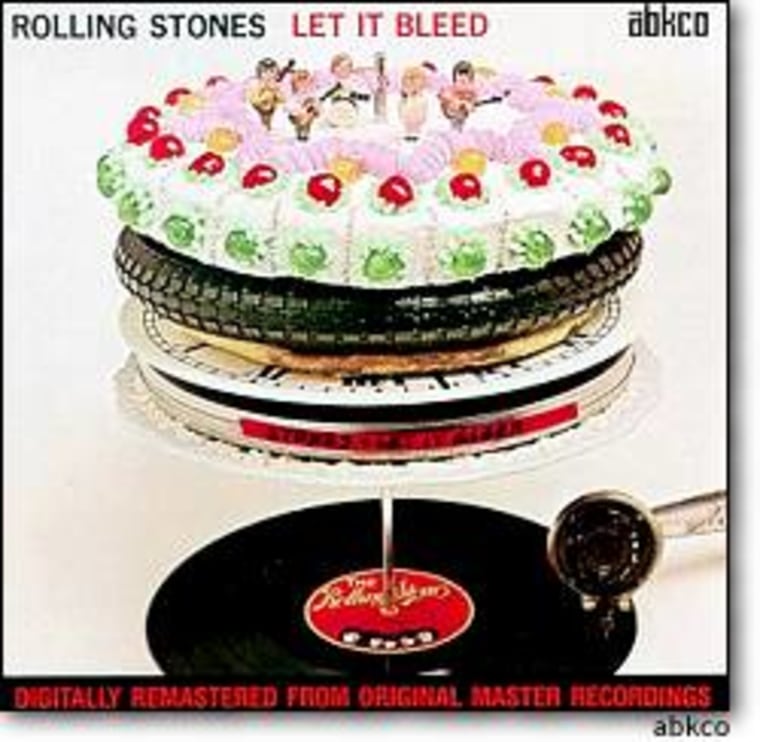Music lovers and hi-fi enthusiasts are all abuzz about the next generation compact disc. These new super high-quality discs and players have been a high-priced underground hit for nearly three years, but that’s all about to change, thanks to some decades-old albums by the Rolling Stones.
Two competing formats both contain digital music files that are of higher quality and resolution than that on a regular CD.
Super Audio CDs have a Super Audio layer with a two-channel audio mix and a 5.1 channel surround mix. They must be played on a SACD player. Some SACDs, called hybrids, also contain a regular CD layer on the same disc and can be played on ordinary CD players.
DVD-Audio discs contain a super-resolution two-channel audio mix and a 5.1-channel surround mix. DVD-A discs must be played on a DVD-Audio player. Some discs also contain a standard Dolby-digital music mix and can be played on any machine that can handle DVD-Video discs.
Confused? I’ll make it simple for you. I won’t compare which format is better at conveying the most tonal nuances when you listen through a super high-priced, multi-channel system. I will say both sound very, very good in a number of stereo and home theater set-ups I’ve heard (although I’m not sure I’ll ever get used to people singing in the front, on the side and behind me). For me, the big difference is that hybrid SACDs will play in my stereo, my home theater set-up, my car and on my portable CD player. DVD-As will play in any DVD player, but not in any of the millions of CD players in use around the world. That gives the SACD a huge advantage in ingratiating the format with most music listeners.

The music underground has been rumbling about both formats for nearly three years. But the players have been prohibitively expensive compared to mass-market CD players — and most of the software (the actual discs you play) have also cost as much as $8-$10 more than the equivalent music CD. Until now.
Thank the Rolling Stones — and the people who market their music at Abkco. Instead of just re-releasing some 22 early Stones albums, Abkco did an extraordinary amount of work remastering this material and creating what amounts to a milestone in musical reproduction history.
Remastered rock masterpieces
Abkco went back into their vaults, took out all the master tapes and started from scratch. They listened, they compared and they found that some songs were originally released at the incorrect speed. They actually compared different master tapes to find songs that matched an actual music track of a video documentary of one Stones’ recording session. What they ended up with are 327 rock masterpieces — and something that should be on any rock aficionados’ want list for this holiday season. Assuming they can wait that long.
For the record (pun intended), very early albums originally recorded in mono are re-released in mono or “true stereo” where available — not the horrible sounding “electronically reproduced stereo”. The original “Let It Bleed” album was reportedly meant to be one contiguous musical presentation — so the new hybrid disc contains no bands of silence between songs. You can also program your SACD player to put those silences back in.
Each of these discs is a hybrid SACD. That means your player will automatically determine whether to play the CD or SACD layer. These discs sound fantastic when played through my standard car CD player — or any of those little speakers in my computers at work or home. But it is through SACD players that these songs really come to life. The SACD tracks are the first EVER, in any format, to approach the sound of the original vinyl tracks in my extensive LP collection. To be honest, the SACDs actually sound better than my old LPs — no clicks, pops or scratches. These discs convey a sense of reality in the music that has rarely been reproduced by any home digital music format.
I almost left out the most important fact of all. These new remastered discs are reasonably priced. Yes, I understand that these are made from songs recorded between 1963 and 1970 and new albums may cost more to make, but in my local music shop the discs, with a suggested retail price of $18.99, are selling for $12.99 each. In contrast, some other SACDs in my collection averaged $19.99 each and didn’t sound as good. For the record, I’ve only tested a dozen or so of the some 650 SACD titles available. Too much music, not enough time!
Abkco kindly sent me three albums to audition. After one listen I ran out to start buying the rest. I also have to congratulate Abkco on going whole hog with the graphics and artwork on each album. They’ve done a great job with the entire series.
Hardware options
Enough with the revolutionary software, how about the hardware to play them? Since I’ve pretty much decided on SACDs for my listening pleasure I’ve narrowed my options to the new SACD players on the market. A number of manufacturers make SACD decks: Sony and Phillips (the creators of both CDs and SACDs), Marantz, Accuphase, Denon, Kenwood, Aiwa and Sharp.
The first SACD tester machine that entered my home is the one I eventually purchased. The Sony SCD-C555ES is a huge black box with a 5-disc carousel and enough bells and whistles to choke a horse. I never thought I’d use all the features included inside, but recently I’ve been proven wrong. More about that in a minute.

The 555ES, with a suggested retail price of $800 is in the middle of Sony’s SACD/CD player line. You didn’t expect Sony to send me one of their $3,000 or $5,000 models did you? Doesn’t matter. The 555ES is hot stuff! I’ve been using it as my primary playback device for the past 3 months and I can happily report that CDs sound a lot better than on my old highly-modified CD deck — and when the material permits, it’s capable of breath-taking music reproduction of SACDs. (See Rolling Stone discs above). Also as reported above, I’m not a big fan of 5.1-channel music reproduction so all those features built-in to the 555ES don’t really interest me.
The latest SACD player I’ve been listening to is Sony’s DVD-NS755V. As you might guess from its model number, this is a progressive scan DVD player that also plays back SACDs, CDs and DVD-As in the somewhat lower-fi Dolby Digital format.
The 755V is thin and light. There are provisions on the back for you to plug it into your stereo (two or 5.1-channel) as well as your TV, monitor or home-theater system. The 755V automatically determines what kind of disc you want to play and plays it. DVDs look great (on my current low-tech living room setup). DVD-As sound OK. but nowhere near as good as they could sound if you have a dedicated DVD-Audio player. CD reproduction sounds good too; SACD playback (in stereo or multi-channel mode) sounds great. Not as refined as with my 555ES — but then again — the 755V has a street price of only $249.
That means you get SACD, CD and progressive DVD playback for under two-and-a half bills. I’ve even seen the 755V selling for under $225 on the Web. There’s also an older Sony single-disc DVD/SACD model still available (DVP-NS500V) kicking around for under $200 - but I think the 755, with its progressive DVD features, is the better buy. Either way, it’s a great way to get into SACDs without shelling out hundreds or thousands of dollars. I’d even go as far as to say that the 755V would be the cornerstone of a great stereo costing $1,000 or less. More about that in an upcoming report.
Two decades ago, when CDs were in their infancy, it took three years before Sony introduced a portable CD player. It sold for something like $500; CDs took off from there. SACDs are now entering their third year on the market with more than one million players sold to date. Sony’s SACD guru David Kawakami, while not telling me exactly what’s being planned, did hint that SACDs would soon be playing back on portable and even car players in the foreseeable future. It looks like SACDs and high-definition music playback may be in our futures — and that’s a good thing.
